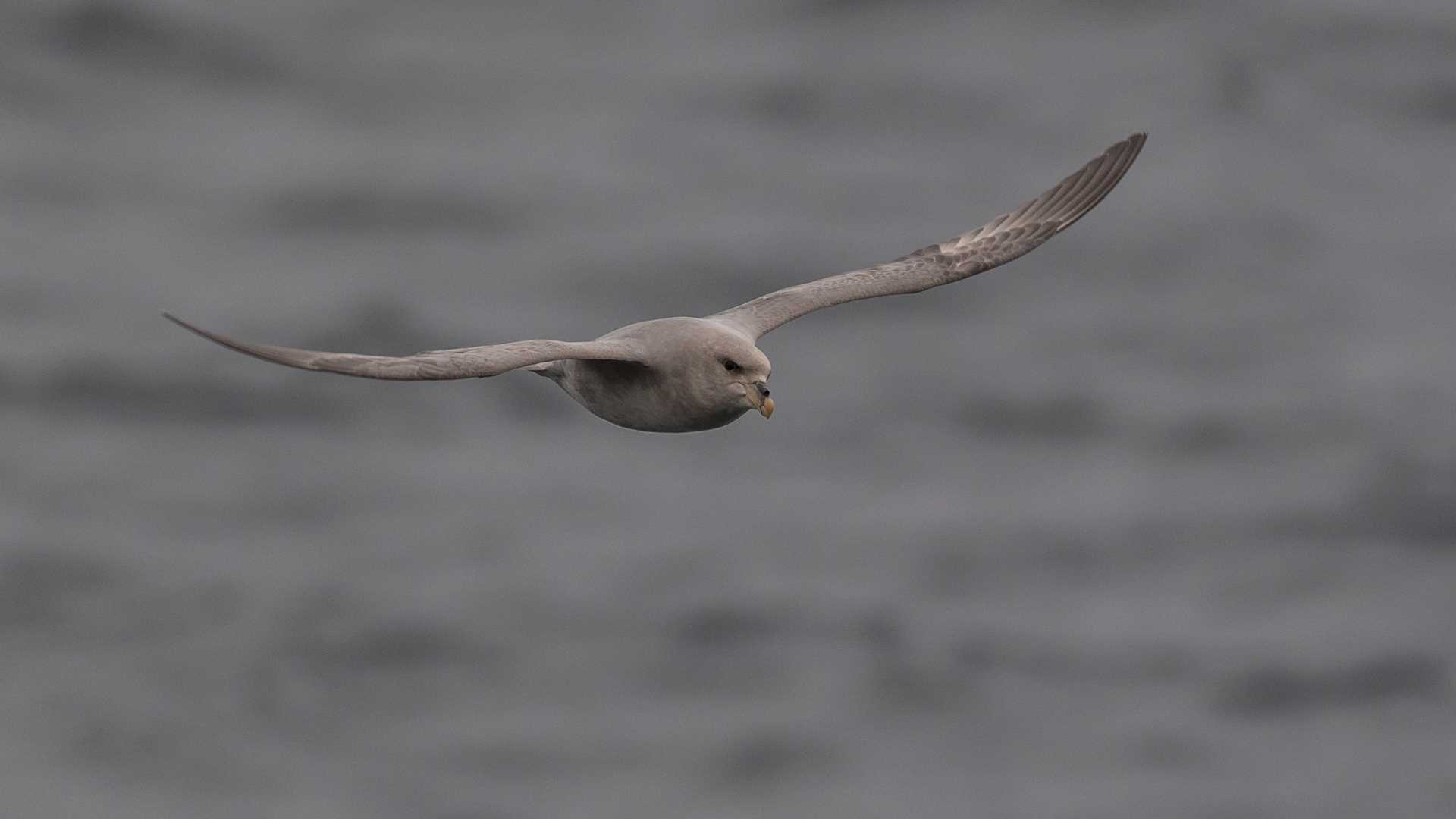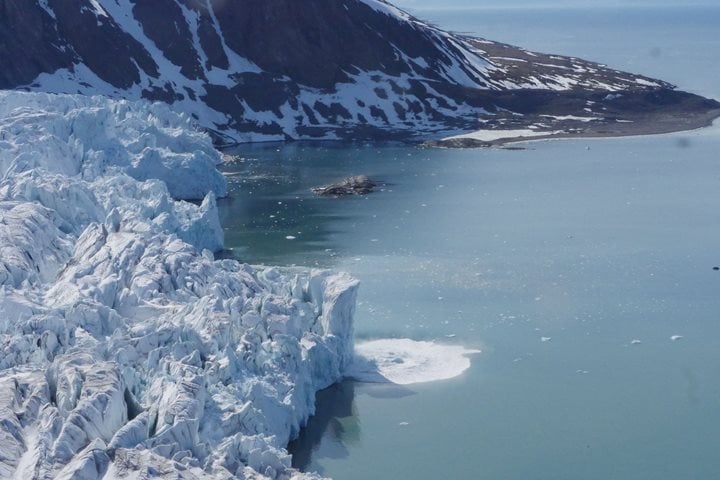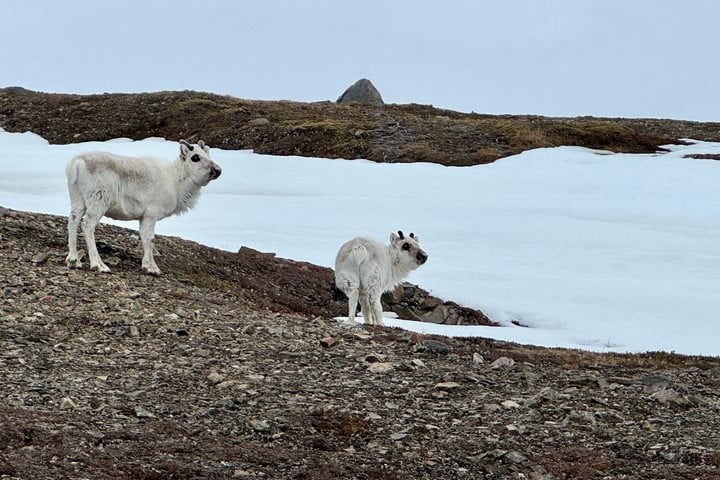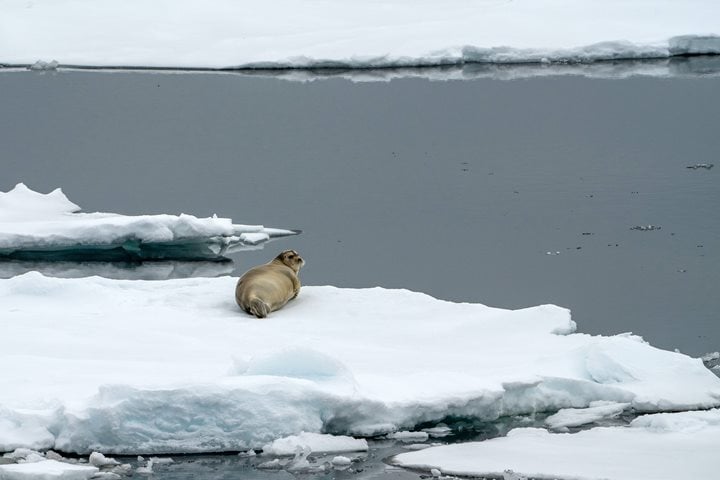Late yesterday afternoon our direct charter flight from Oslo landed at the small but modern airport of Longyearbyen, Svalbard. We were quickly wisked to the awaiting National Geographic Explorer. As soon as all of the luggage was distributed and official paperwork taken care of, the crew dropped the lines from the dock and we started our expedition. However soon after dinner the expedition leader, Lucho, announced a quite unusual sighting. We soon were treated to the sight of a feeding blue whale. What a way to start off the voyage!!
In the morning we could see on the port side of the ship in the distance the rugged peaks and snow covered landscape of western Spitsbergen Island. With light winds behind pushing the ship, we continued on a course for the southernmost fjord system on the west side of the island. Hornsund is well known as one of the most spectacular areas of Svalbard with its high jagged peaks and fjords ending in tidewater glaciers. First sighted in1610 by Jonas Poole, the name was given for a reindeer antler discovered by some crew members when they first set foot in the fjord.
The first and foremost presentation of the morning was an introduction to the ship’s natural history staff. Varied in expertise, but with many years of experience, the staff will be talking with us about the natural history, history, and current politics of the archipelago. We were then taught about the more recent history of tourism in the islands. Because of the potential for Polar Bears to occur anywhere we also learned about how to be safe when we go ashore.
Following lunch was our first excursion of the voyage at an amazing location called Gnåloddenn or “nagging point” referring to the noise of seabirds nesting high on the cliff face towering above the shoreline. Eagerly we finished lunch and readied ourselves for the first adventure onshore. Upon landing, the staff divided us into groups for various length walks. There was not a long distance to walk, but a few more energetic of the group climbed up the slope above the landing area to get a view of the fjord and to more closely experience the cliff nesting seabirds above. Nesting on the ledgers were black-legged kittiwakes, Brunnick’s guillemots, and barnacle geese. On the ground back from the landing were small fields of deep purplish-pink blooming purple saxifrage, an extremely hardy dwarf flowering tundra plant.
After a few hours onshore it was time to return to the ship. Then we were treated to a special Swedish soup on the back deck as we cruised further into Hornsund in search of wildlife. At cocktail hour Captain Oliver Kruse introduced the compliment of ship’s officers. Soon we were again out in the Fram Strait offshore of Spitsbergen setting a course southward.







